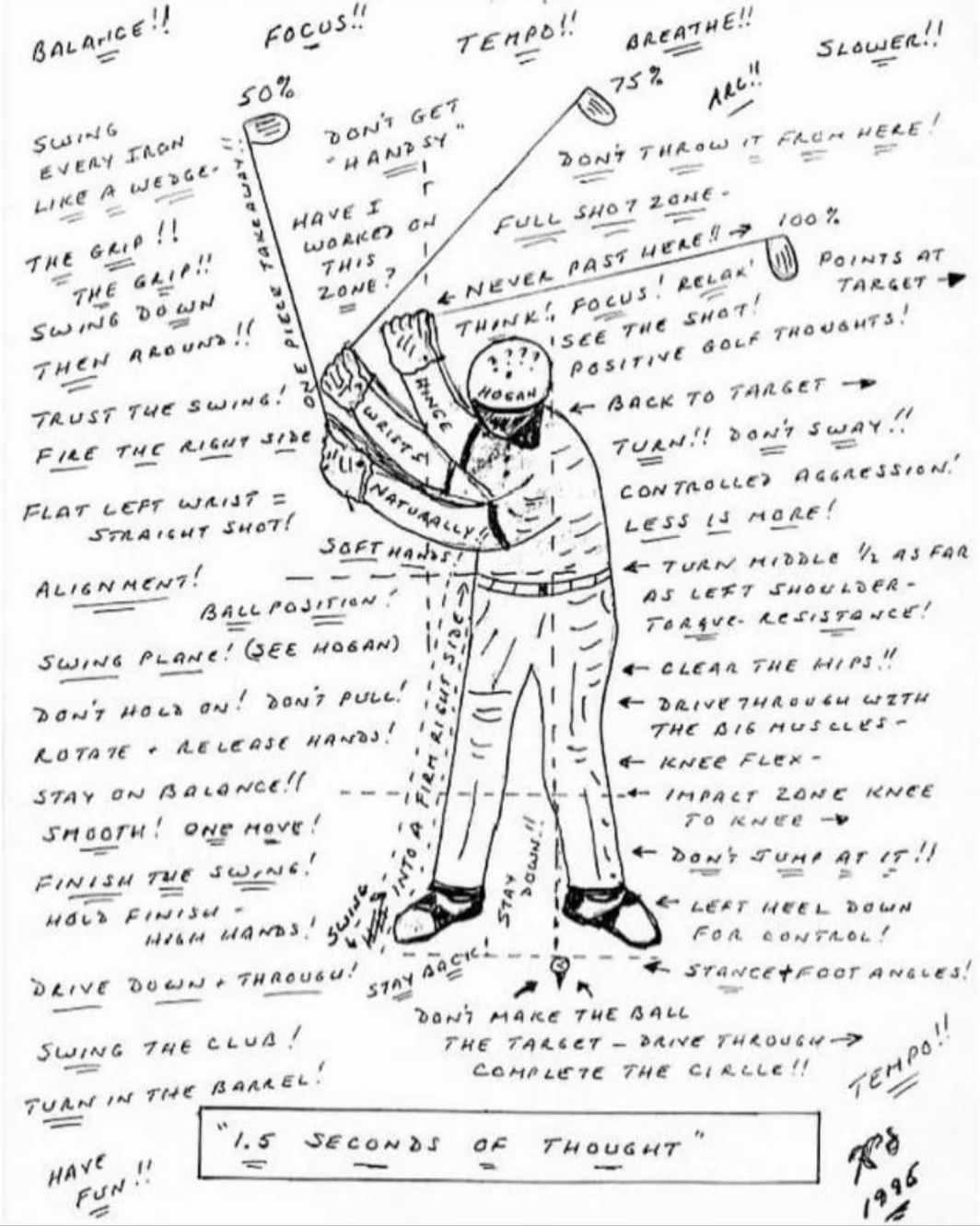The Two Types of Golf Swings and How I Fixed My Fat Shots for Good

A few years ago, I sought out an instructor to help me figure out something that was plagueing my golf game: fat shots. I could not for the life of me figure out how to consistently strike the ball without hitting it fat, meaning hitting the ground before the ball. I purposely wanted to find an instructor who did not rely on launch monitors and fancy technology, but someone who had been around the game for a long time and was a career golf instructor, not an aspiring pro who teaches on the side. After much digging and reading reviews, I found my man: Lee Breckenridge. Lee actually taught from an indoor space about 20 minutes from me, so I gave him a call and booked a lesson.
When I entered his facility, I saw that he was exactly who I was looking for and his setup was exactly how I wanted. He was an older gentleman, likely in his 70’s. He had decades of teaching youth golf, which told me he’s a patient instructor and must love to teach. His set up consisted of a mat, a net that had seen better years, and two cameras: one for down the line, and one for face on. Before we started, we sat down for a few minutes where he asked me about my game, what I was looking for, and he told me a little about himself. He then had me take a couple of swings and we went over what he saw and what I could do to fix my game. At that time, I had yet to break 90 and it was because of two main things: errant tee shots, and very inconsistent striking with my approach shots. What he told me next really opened my mind…
Lee told me there are 2 main categories of golfers and golf swings that fit them. The first is the athletic type that has excellent hand-eye coordination that could swinging the club as hard as they could, and they could still consistently time their swing to make contact with the ball. That was actually rare and not many people fit into that group. The second group was the much more common type which even he said he belongs in. This is the person who is not the most athletic, and must rely on solid mechanics and fundamentals to make consistent contact with the ball. What this means is that people in this group cannot make consistent contact by swinging out of their shoes. It all started to click. He had me do a drill, where he said instead of swinging the club, imagine you are just using gravity to let your hands fall and swing through the ball that way. I have to admit, it felt super weird and passive. When he showed me a video of my swing, all of my major swing flaws had disappeared. No more chicken wing, no early extension, everything was connected, and I was getting my arms extended through the swing. Most importantly, I stopped hitting the ball fat. The thing with hitting into a net though is that you don’t really know how far the ball is headed.
Over the next few weeks, I went to the range and practiced this new swing. I was definitely losing a little bit of distance, but I was making much more solid contact. In about a couple of weeks, I played 3 rounds, all in the 80’s. I talked about this with him in my next lesson and he thought there was still room for lots of improvement.
I’ve since sped up my swing a little bit, where my normal swings feel pretty close to a practice swing. My arms aren’t dead passive, but I’m also not trying to kill the ball either. It’s a constant struggle because when I’m standing over the ball and about to start my downswing, my lizard brain is telling me to smash the ball and it’s really hard and unnatural for me to fight that urge, even on the driving range.
I guess the moral of the story here is, if you’ve tried different instructors and just can’t fix some parts of your game, try to mix things up. Try to go back to the basics and find someone who truly understands the swing and how to communicate those ideas to their students in an effective way. I wouldn’t recommend changing instructors all the time, but try to find one that you connect with, particularly on the communication level.

Comments